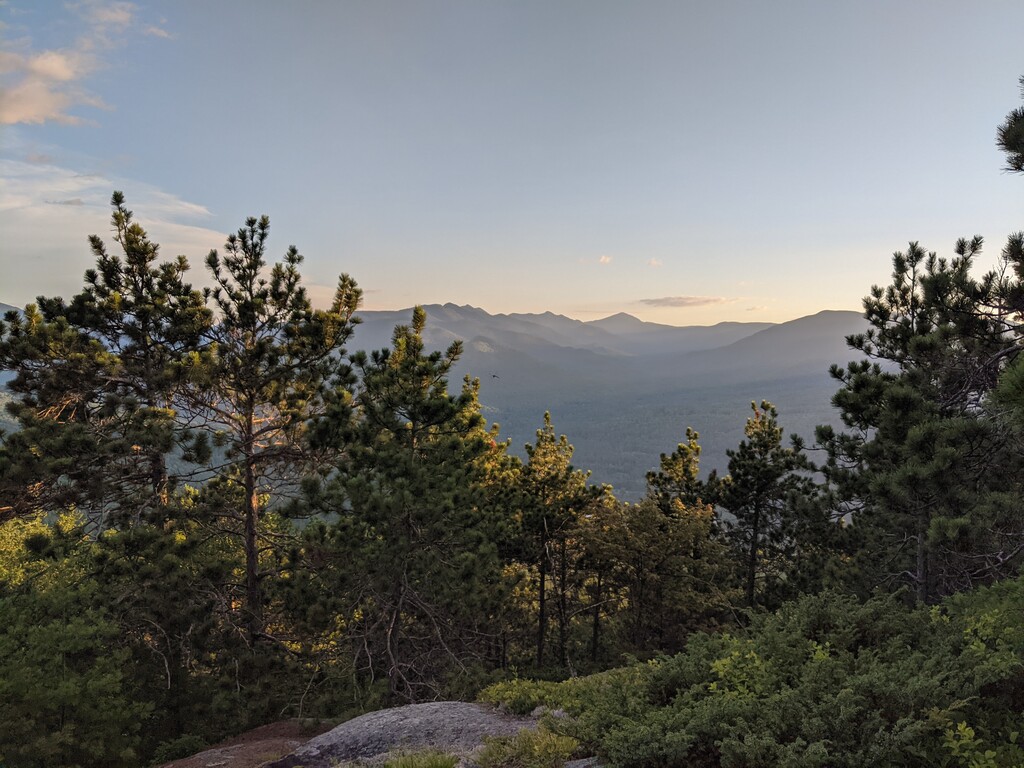Get PeakVisor App
Sign In
Search by GPS coordinates
- Latitude
- ° ' ''
- Longitude
- ° ' ''
- Units of Length

Yes
Cancel
Share ×

Scan the QR code and open PeakVisor on your phone
❤ Wishlist ×
Choose
Delete
The Hammond Pond Wild Forest is located in eastern New York, USA, close to Lake Champlain’s western shore. The 45,500 acre (18,400 hectare) forest is part of the Adirondack Forest Preserve and includes 38 named mountains. Hail Mountain is the tallest at 2,635 ft (803 m) and the most prominent, rising up 1,539 ft (469 m).
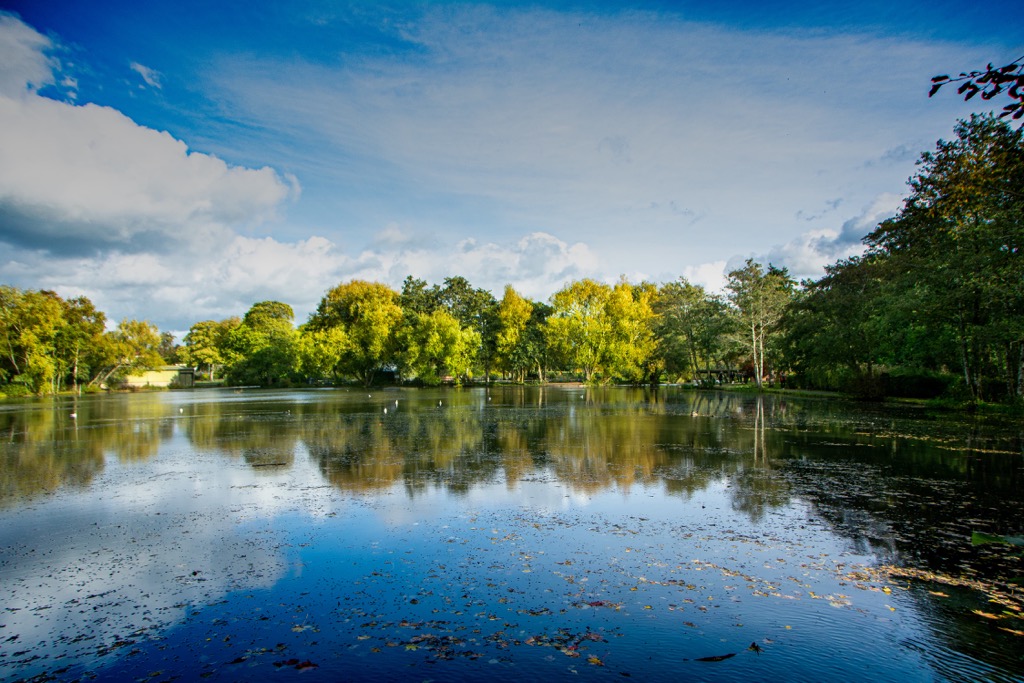
The Hammond Pond Wild Forest spans 45,500 acres (18,400 hectares) in the eastern portion of the Adirondack Forest Preserve, state-owned land within the Adirondack Park in New York. It contains small mountains such as Hail Mountain (2,635 ft/803 m), Owl Pate (2,448 ft/746 m), and Harris Hill (2,208 ft/673 m), as well as numerous bodies of water. A few of the more popular lakes and ponds are Paradox Lake, Eagle Lake, Hammond Pond, and Moose Mountain Pond. Parts of the East Branch Ausable River, the Schroon River, the Boquet River, Black Brook, and Crowfoot Brook run through it.
The forest is located in Essex County and was established as a wild forest in 1972. It lies to the north of Pharaoh Lake Wilderness Area, to the east of the Dix Mountain Wilderness, and to the west of Lake Champlain.
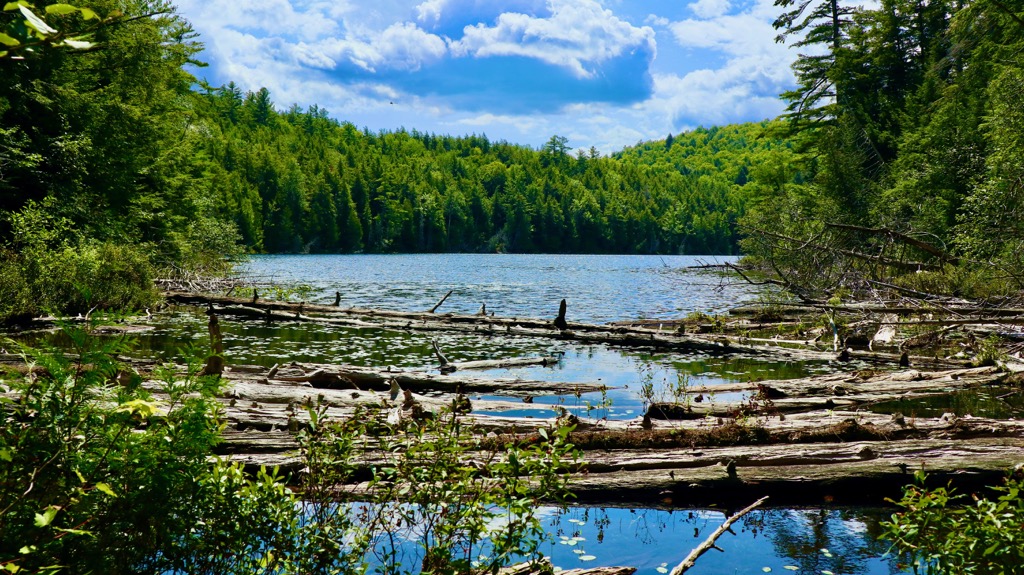
Most of the exposed bedrock in the Hammond Pond Wild Forest is part of the Grenville Province – old, metamorphosed sedimentary rocks that are up to 1.2 billion years old. The area has a number of igneous intrusions. The oldest, including and surrounding Hail Mountain, consists of anorthosites and formed over one billion years ago.
Over the next few hundred million years, the rocks were uplifted, eroded, and then flooded to become a shallow ocean. New sediment was deposited in the Iapetus Ocean. Remaining hints of this ocean can be seen in the valleys of the Schroon River and Penfield Pond where signs remain of ancient fault zones where sediment dropped down into structures called gravens.
The Adirondacks now form a dome, rather than an extended range like most mountains. The dome is approximately 160 mi (260 km) wide and 1 mi (1.6 km) tall. It began to form as far back as 20 million years, and continues to rise marginally each year.
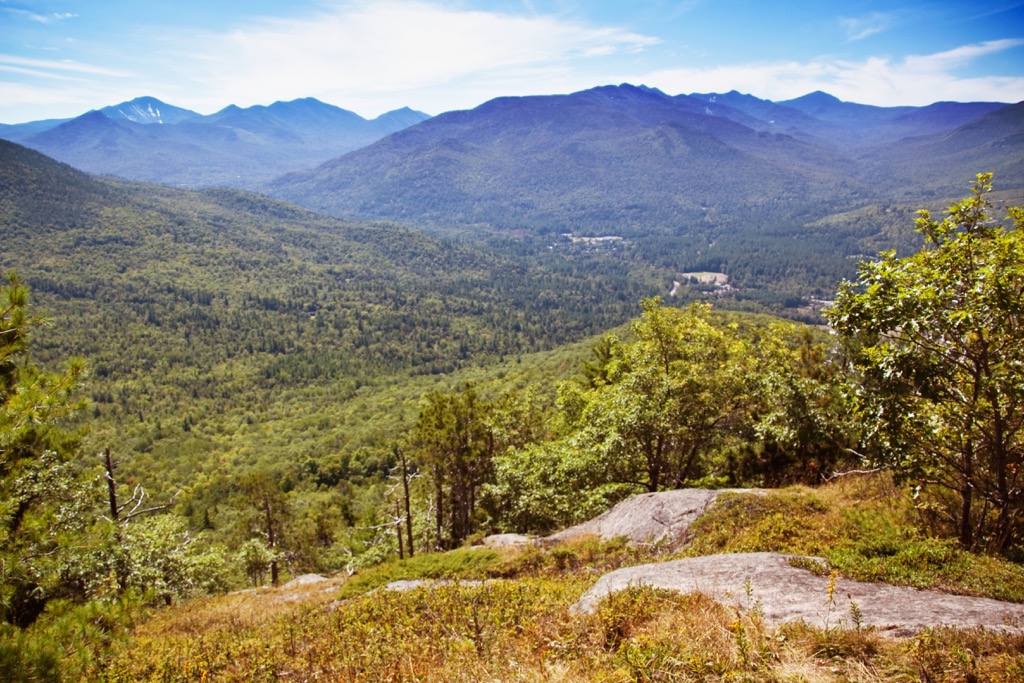
Forest composition can be placed into five main categories. The pine-oak-northern hardwood type consists of red oak, white, oak, white pine, yellow birch, American beech, basswood, sugar maple,and white ash and typically grows in the fertile and well-drained areas near the Lake Champlain basin. Oaks usually grow on dry ridges and south facing hillsides while white pine is typically found in sandy outwash near rivers and adjoining slopes.
The next type is white pine-northern hardwood patches that grow in a mix of white pine, American, beech, sugar maple, white birch, and yellow birch. In some cases, clearcutting for charcoal production created the space for these particular forest stands.
Hemlock-northern hardwood forests grow on low to middle elevation slopes. Species seen here include hemlock, sugar maple, red maple, American beech, basswood, yellow birch, black birch, red oak, and white pine. The invasive hemlock wooly adelgid is an ecological threat in this forest type.
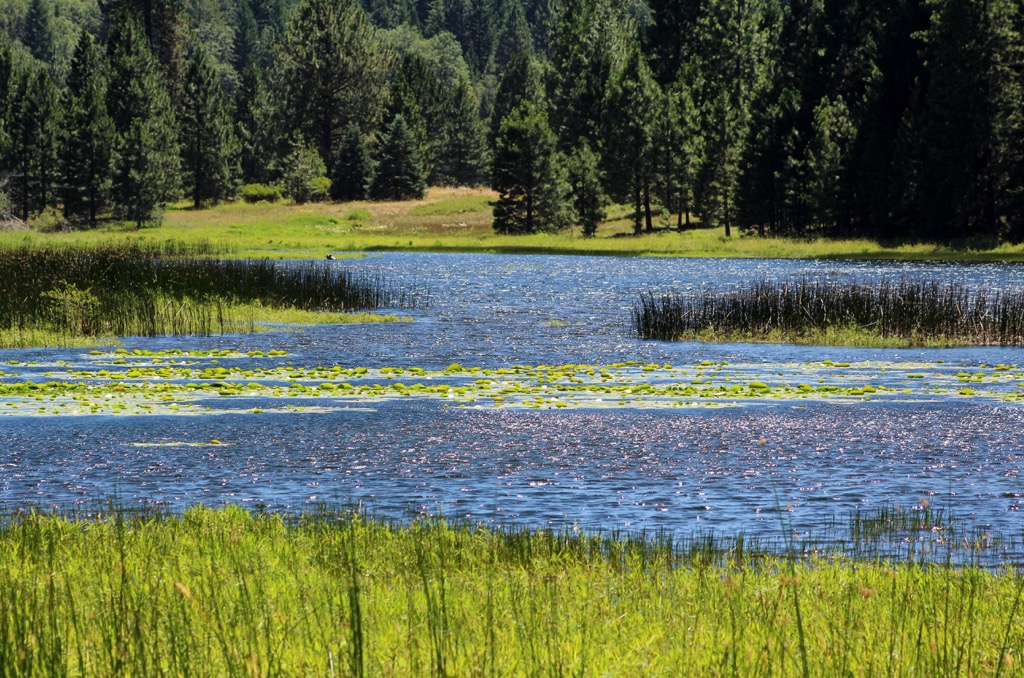
The spruce-fir forest type accounts for only a minor portion of forest. It occurs either at higher summit elevations or in low, wet areas near water. Balsam fir and red spruce grow on the mountains while black spruce, red spruce, balsam fir, and red maple occur near water. The final forest type is pioneer hardwood. These include some combination of quaking aspen, paper birch, pin cherry, white pine, black cherry, and white ash. These are early successional forests that emerged from previously burned or otherwise cleared and distrubed areas.
Common larger mammals found in this area include white-tailed deer, moose, black bears, coyotes, raccoons, red and gray foxes, bobcats, fishers, American martens, river otters, minks, striped skunks, long-tailed weasels, short-tailed weasels, beavers, muskrats, porcupines, and snowshoe hares. A number of salamanders, toads, frogs, turtles, and snakes make their home in the damp forest understory and floor.
Many birds occupy the diverse ecological niches in the forest. Sparrows, flycatches, crossbills, warblers, wrens, and grosbeaks are found throughout the boreal forest of varying elevations. Loons, grebes, herons, biterns, ducks, and mergansers frequent the shorelines, ponds, and lakes. Meadows, swamps, and early growth forest support warblers, yellowthroats, indigo buntings, and towhees that are not found in older forest stands.
Common songbird species found here include ovenbird, red-eyed vireo, wood thrush, and pileated woodpecker. Birds of prey commonly seen in the area include barred owl, great horned owl, eastern screech owl, northern goshawk, red-tailed hawk, sharp-shinned hawk, and broad-winged hawk.

This region is part of the traditional territory of the Mohawk. One of the tribes of the Iroquois Confederacy, the Mohawk practiced agriculture to grow corn and shifted seasonally for hunting and fishing. They sided with the British during the American Revolution and many moved up to Canada after the war concluded.
Much of the forest was impacted by exploitation of iron ore and timber during the 1800s. The iron ore industry peaked in the 1880s. During this time, the booming economy of the region drew many people to the area for work which led to the creation of the communities of Ironville, Mineville, Moriah, Port Henry, and Witherbee. After its peak, the industry slowly declined but lingered on in the region until the 1960s.
The state began acquiring parts of the forest beginning in the early 1900s. In 1972, Hammond Pond Wild Forest received its official designation as a wild forest within the Adirondack Forest Preserve.
Hiking, trail running, paddling, boating, fishing, camping, cross country skiing, snowshoeing, hunting, and trapping are popular activities in the area. There is one designated primitive tent site, two lean-tos, and multiple undesignated tent sites throughout the wild forest. Primitive tent sites are accessible only by hiking or paddling.
A moderate hike, the trail to Baxter Mountain (2,438 ft/743 m) is 2.9 mi (4.7 km) out and back and gains just under 800 ft (244 m) in elevation. Follow blue trail markers because there are small offshoot trails along the way. Parts of the trail pass through private property and are part of an easement so it is important to be respectful and stay on the trail. There are a few rocky scrambles closer to the top. Although the summit is mostly wooded, there are some great views from the trail on the way up.
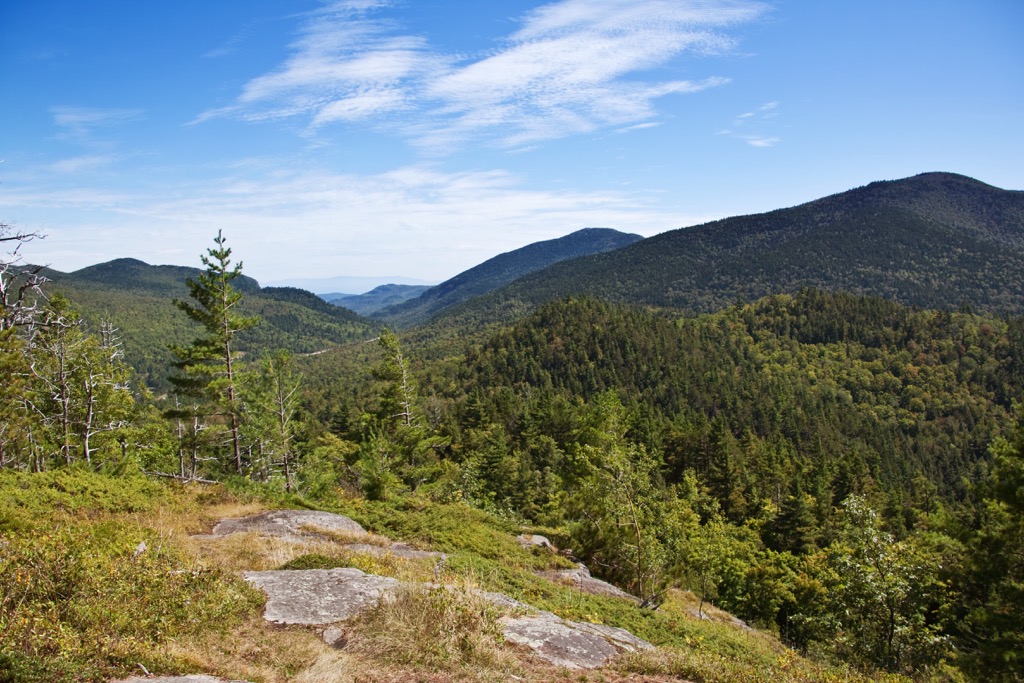
At 6.8 mi (10.9 km) out and back with 500 ft (152 m) elevation gain, this is great for camping, fishing, and hiking. It’s not heavily trafficked so you won’t run into many other people here. A lean-to is located at the end. It’s a fairly flat and easy route and lets you take in the verdant forest and potentially glimpse some amphibians along the forest floor. The pond has great lunch spots and lookouts of the nearby mountains. Heads up that it may be buggy in summer.
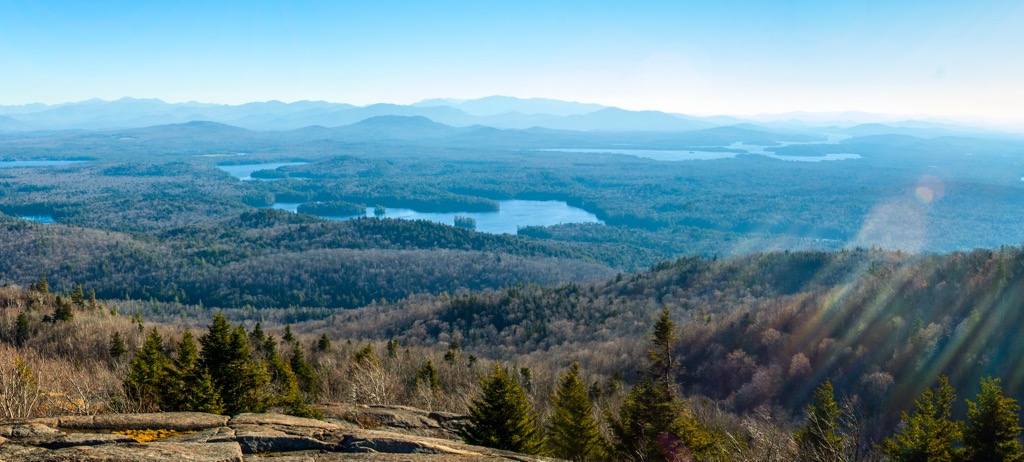
This is a brief 0.6 mi (1 km) out and back trail that climbs 120 ft (37 m) along a service road to access the fire tower on Belfry Mountain. Fire towers were placed on mountain summits and used from the early 1900s through the 1970s as a means of early wildfire detection. The Belfry Mountain Fire Tower is the easiest of all fire towers in the state to access. It rises 47 ft (14 m) above the mountain’s 1,857 ft (566 m) summit giving great views out across Lake Champlain basin and Vermont. It’s also a good spot for watching bird migrations through the Champlain Valley.
Lincoln Pond Campground is an established campground nearby. There are a handful of small towns peppered around the area and larger cities lie to the south in New York or across Lake Champlain in Vermont.
A little over an hour’s drive away, you can relax, get outdoors, or get your adrenaline up at a horse race in Saratoga Springs. Spend a sunny day at Saratoga Lake swimming, fishing, paddling, boating, or enjoying a lakeside meal. Saratoga Spa State Park offers various art and cultural exhibits, a series of pools, and a golf course.
It’s a modest size town with only 28,000 inhabitants, but there are several museums, galleries, and shops to explore downtown. You’ll be able to find a decent selection of restaurants and dining atmospheres, as well as a spectrum of lodging options from budget and camping to historic inns and hotels.
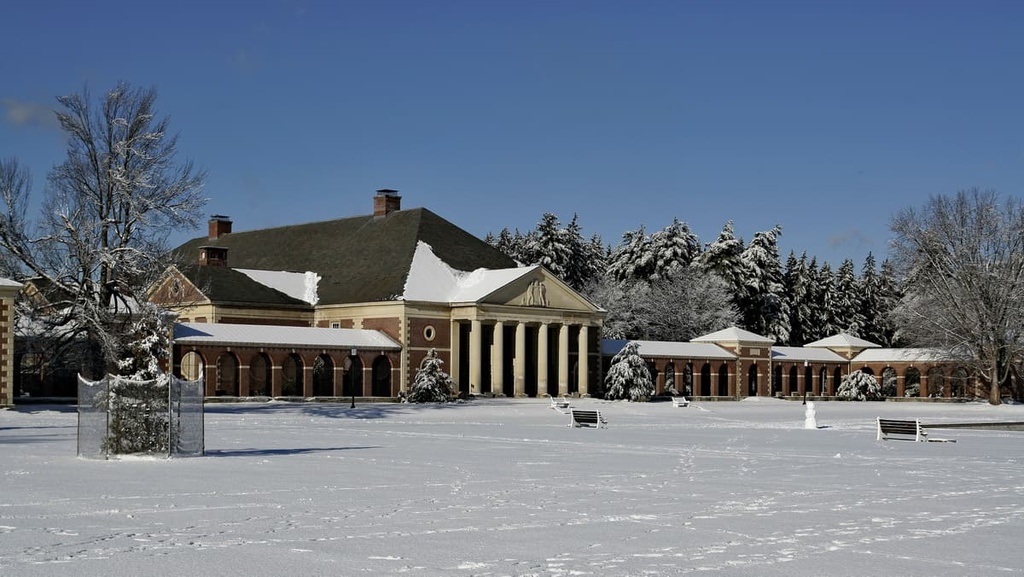
Located a bit over an hour and a half away by car on the opposite shores of Lake Champlain, Burlington, Vermont is a charming New England town. It has a population of 43,000 and a robust community life. There are plenty of farmers markets and food truck gatherings, as well as cute downtown shopping. Spend the day out on the water at Lake Champlain or visit the ECHO, Leahy Center for Lake Champlain, a small museum focused on the ecology and stewardship of the lake.
Burlington is home to a fairly large Nepali population so the Nepali food you’ll find in town is authentic. There’s also a choice of diners, pizzerias, breweries and pubs, noodle shops, BBQ, Mediterranean, and more. If you’re hoping to stay over here, you’ll find several choices ranging from nearby campgrounds to B&Bs to hotels.
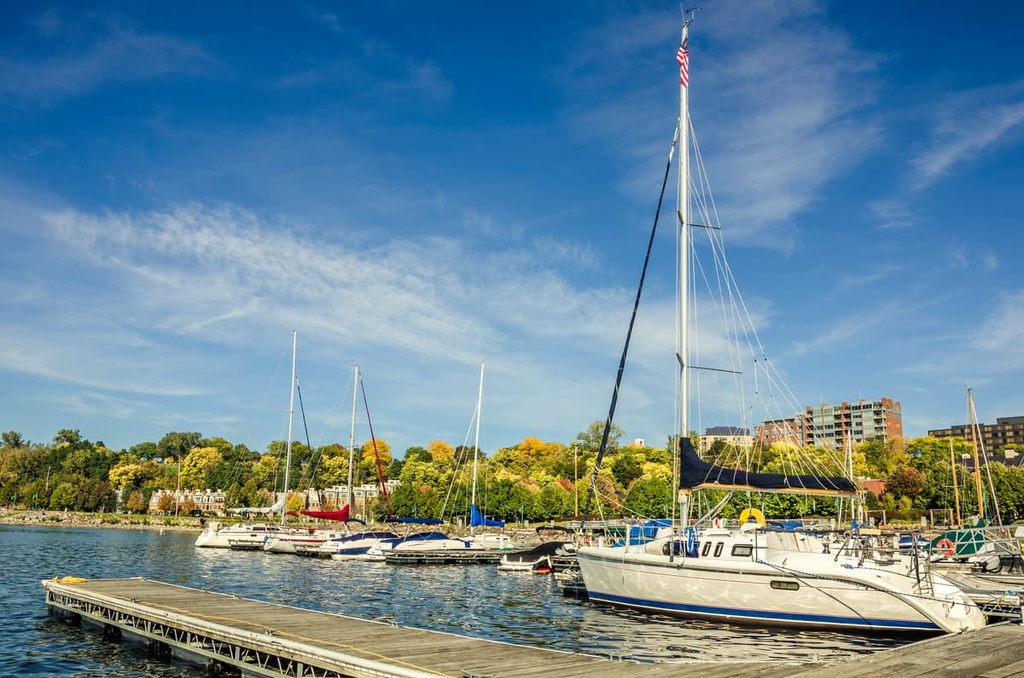
One hour and 45 minutes drive away, New York’s state capital offers you museums, cruises along the Hudson River, ziplining adventures, or a trip to the nearby Howe Caverns. The city of 97,000 people is a stone’s throw from numerous parks, natural areas, rivers, and lakes that make for perfect outdoor day or half-day trips.
The city has a good selection of restaurants, including those that source their products locally, are dog friendly, produce top-notch vegan and vegetarian foods, or classic pizzerias, breweries, and delis. If you're planning to stay over, you’ll be able to book anything from a budget-friendly hotel to a historic and cozy B&B, and many other options in between.

Explore Hammond Pond Wild Forest with the PeakVisor 3D Map and identify its summits.







